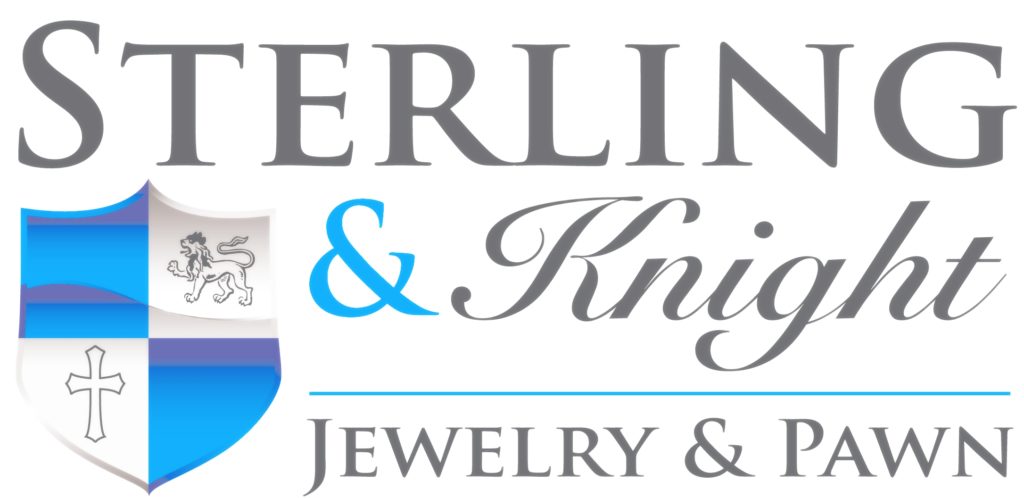What Is Bullion?
You can think of bullion as an umbrella term for various high purity precious metals such as gold, silver, platinum, and palladium. Bullion is often made into bars, ingots, coins or rounds.
Definitions can vary a bit amongst some people. Some will consider base metals like copper, nickel, and zinc bullion as well. But the majority of bullion buyers will buy, sell, and trade gold, silver, platinum, and palladium as their primary investments.
The main requirement for a precious metal item to qualify as bullion is its high purity content which is typically well above 90% pure. This is why gold jewelry is generally not categorized as bullion unless it is 24 karats (i.e. 99.9% pure gold, also called .999 fine gold).
Need to Buy or Sell Silver or Gold Bullion?
$10-$750k confidential transactions beating other online pricing!
Silver and Gold Bars can be minted/manufactured both privately and by a national government. Generally a bar comes with a lower premium, and you will find common 1 gram, 5 gram, 20 gram, 1 ounce, 10 ounce, 50 ounces, 100 ounce bars, Kilo bars, occasionally 1000 ounce bars.
Bars are rectangular in shape and produced all around the world. You will find them stackable for optimal storage depending the design and type of pour.
A silver or gold “coin” is considered legal tender and can only be issued by a national government. There are several all unique features a coin will carry compared to a “round” which can be minted by a private mint, national government and others.
- A coin is minted by a national government
- A coin will carry the name of the government who issued and minted the bullion, and will carry a denomination, and considered legal tender.
- A coin when produced with silver, gold or other precious metals will typically carry a higher price then private minted rounds.
- A coin’s weight and purity is backed by the national government and production of fake coins is regulated by anti-counterfeiting laws
Commonly Known Silver Coins
- Silver American Eagle
- Canadian Silver Maple Leaf
- Chinese Silver Panda
- Austrian Silver Philharmonic
- Australian Silver Kangaroo
- South African Silver Krugerrand
- British Royal Mint Coin
- Mexican Libertad
- British Silver Britannia
- Pre-1964 90% Silver also Known As Junk Silver
- Barber Dime (1892-1916)
- Mercury Dime (1916-1945)
- Roosevelt Dime (1946-1964)
- Barber Quarter (1892-1916)
- Standing Liberty Quarter (1916-1930)
- Washington Quarter (1932-1964)
- Barber Half Dollar (1892-1915)
- Walking Liberty Half Dollar (1916-1947)
- Franklin Half Dollar (1948-1963)
- Kennedy Half Dollar (1964)
- Morgan Dollar (1878-1921)
- Peace Dollar (1921-1935)
- 35-40% Silver Coins
- Eisenhower Dollar – 40% – (1971-1976)
- Kennedy Half Dollar – 40% – (1965-1970)
- War Nickel – 35% – (1942-1945)
Commonly Known Gold Coins
- Gold American Eagle Type 1 and Type 2
- American Buffalo Gold Coin
- Canadian Gold Maple Leaf
- Austrian Gold Philharmonic
- Australian Gold Kangaroo
- South African Gold Krugerrand
- British Royal Mint Coin
- Mexican 50 Gold Peso
- Mexican 20 Gold Peso
- British Gold Britannia
- Austrian 100 Gold Corona
- Vintage – Old Production
- $1 Gold Liberty Type 1 (1849-1854)
- $1 Gold Liberty Type 2 (1854-1856)
- $1 Gold Liberty Type 3 (1856-1889)
- $2.50 U.S. Liberty Gold Quarter Eagles (1840-1907)
- $2.50 Indian Head Gold Coin / Quarter Eagle (1908-1929)
- $5 Liberty Gold Half Eagle (1839-1908)
- $5 Indian Head Half Eagle (1908-1929)
- $10 U.S. Liberty Gold Eagle Coin (1838-1907)
- $10 Gold Indian Head Eagle (1907-1933)
- $20 U.S. Liberty Gold Double Eagle (1849-1907)
- $20 Saint Gaudens Double Eagle (1907-1933)
- $1 Pound – British Sovereign (1817-2007)
- $20 Francs – French Angel Franc (1871-1898)
- $20 Francs French Rooster Franc (1901-1914)
- $20 Francs Swiss Helvetia Franc (1897-1947)
A silver or gold “round” is not considered legal tender and can be minted by a private mint or national government. This makes them different then a “coin” because they are not backed by the national government of issue. They are not considered legal tender, and typically (but not always) carry a slightly lower premium over the spot price of the metal it is minted from.
There are several all unique features a “round” will carry compared to a “coin”
- A round can be privately minted, and are not considered tender
- A round may carry trade marks, and copyrights, bringing a unique premium
- Do not carry dates, and can never display a value or denomination.
Commonly Known Mints/Manufactures of Rounds
-
- 9 Fine
- Argor-Heraeus
- Asahi Refinery
- Austrian Mint
- Bavarian State Mint
- British Pobjoy Mint
- Engelhard
- Geiger Edelmetalle
- Germania Mint
- Golden State Mint
- Highland Mint
- Johnson Matthey
- KOMOSCO
- Monarch Precious Metals
- Nadir Metal Refinery
- PAMP Suisse
- Polish Mint
- Rand Refinery
- Republics Metal Corporation
- Scottsdale Mint
- Silvertown
- South African Mint
- Sunshine Mint
- The Chinese Mint
- The Perth Mint
- The Royal Mint
- The Royal Canadian Mint
- Valcambi SA
FAQ Coming Soon
powered by Advanced iFrame. Get the Pro version on CodeCanyon.
